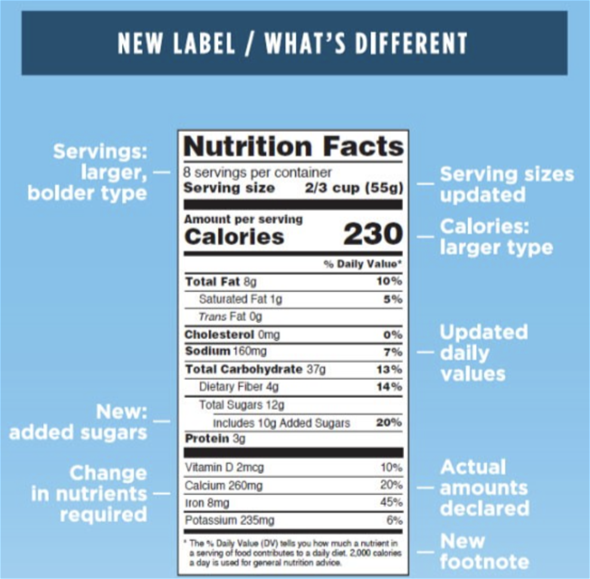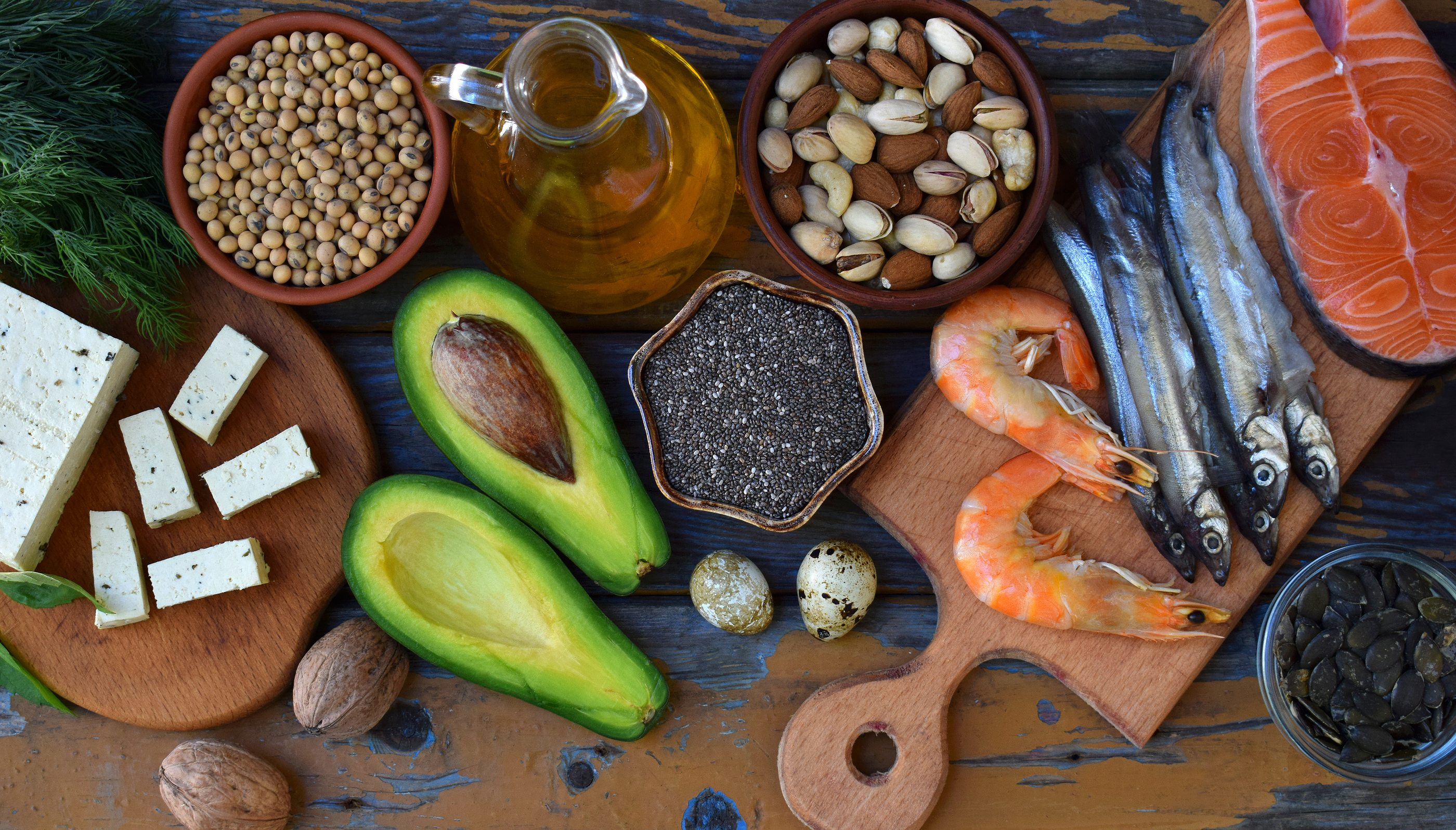By Michelle Routhenstein, MS, RD, CDCES, CDN
The type of dietary fat consumed may affect the risk of coronary artery disease. This article explains the different types of fats, how they affect blood cholesterol levels, and how to properly counsel patients and clients on which fats to consume and which to replace to improve heart health.
A Breakdown of Fat Types
Trans fats are typically made through partial hydrogenation, an industrial process where hydrogen is added to make liquid fat solid at room temperature. Partially hydrogenated fats have a longer shelf life than oils high in unsaturated fatty acids. However, trans fatty acids increase circulating levels of low-density lipoprotein (LDL) cholesterol and lower high-density lipoprotein (HDL) cholesterol levels which contributes to cardiovascular disease risk.1
On a nutrition facts label, “total fat”, “saturated fat”, and “trans fat” are required to be displayed. However, if a food contains less than 0.5 grams of trans fat per serving, it can appear as 0 grams of trans fat.2

Source: U.S. Food and Drug Administration
In 2015, the FDA took its first significant step to reduce artificial trans fat in the food supply by determining that partially hydrogenated oils (PHOs) are no longer “Generally Recognized as Safe” (GRAS) due to their adverse health effects. The FDA established January 1, 2021, as the final compliance date to allow manufacturers time to reformulate products. In 2023, the FDA implemented a direct final rule to eliminate PHOs from processed foods to further reduce trans-fat levels in packaged foods.3 Many manufacturers have replaced trans fats with saturated fats, such as palm oil, to improve shelf stability and achieve a solid texture at room temperature.
Saturated fats do not contain carbon-carbon double bonds and are typically solid at room temperature. Most types of saturated fat increase circulating levels of LDL cholesterol. Saturated fats are typically found in butter, cheese, meat, whole fat dairy, and some plant oils like coconut and palm oil.
Unsaturated fat contains one or more double bonds between carbon atoms and is typically liquid at room temperature. Unsaturated fats include monounsaturated (MUFA) and polyunsaturated (PUFA) fats. Their distinction is based on the number of bonds in their chemical structure. Unsaturated fats lower cholesterol absorption and reduce overall cholesterol levels by increasing the activity of LDL receptors in the liver, which helps clear LDL particles (lipoproteins carrying cholesterol) from the bloodstream.4 Unsaturated fats are commonly found in fatty fish, nuts, seeds, and plant-based oils like soybean, canola, avocado, and olive oil. If the nutrition facts label does not include MUFA and PUFA facts, consumers can calculate those manually by subtracting the saturated and trans fats from the total fat grams. The remaining fat grams are unsaturated fats.
Recommendations for Patients and Clients
The U.S. Dietary Guidelines, World Health Organization (WHO), and The American Heart Association (AHA) recommend limiting daily saturated fat intake. AHA recommends limiting saturated fat to less than 6% of total daily calories. For someone consuming a 2,000-calorie diet, this is about 120 calories, equating to about 13 grams of saturated fat daily. This target may be challenging to meet without honing into the grams of saturated fat listed on nutrition labels.
Research shows that the greatest benefit may be achieved by not only removing saturated fat but also replacing it with unsaturated fat (MUFA and PUFA). This replacement may help improve cholesterol levels, reduce inflammation, and lower the risk of heart disease.5
Consider these swaps from sources of saturated fat to unsaturated fat that can improve LDL cholesterol and cardiovascular disease risk:
| Saturated Fat | Unsaturated Fat |
| 1 tablespoon butter 7 grams of saturated fat 3 grams of unsaturated fat |
1 tablespoon soybean oil 2 grams of saturated fat 11 grams of unsaturated fat |
| 1 tablespoon coconut oil 11 grams of saturated fat 1 gram of unsaturated fat |
1 tablespoon olive oil 2 grams of saturated fat 11 grams of unsaturated fat |
| 1 beef stick 6 grams of saturated fat 7 grams of unsaturated fat |
1/2 cup edamame 0.5 grams of saturated fat 3.5 grams of unsaturated fat |
| 3.5 ounces rib eye steak, uncooked 8 grams of saturated fat 8 grams of unsaturated fat |
3.5 ounces salmon, uncooked 3 grams of saturated fat 8 grams of unsaturated fat |
| 2 tablespoons cream cheese 5 grams of saturated fat 2 grams of unsaturated fat |
1/2 small avocado, smashed 2 grams of saturated fat 12 grams of unsaturated fat |
| 1 cheddar cheese stick 5 grams of saturated fat 2 grams of unsaturated fat |
1 ounce almonds 3.9 grams of saturated fat 13 grams of unsaturated fat |
Fat plays an important role in our health and consumption of fat is necessary for energy, cellular function, nutrient and carotenoid absorption, and hormone regulation. Fat should be looked at as a part of a whole balanced diet that contains complex carbohydrates and lean proteins.
REFERENCES
-
Iqbal MP. Trans fatty acids - A risk factor for cardiovascular disease. Pak J Med Sci. 2014 Jan;30(1):194-7. doi: 10.12669/pjms.301.4525. PMID: 24639860; PMCID: PMC3955571. https://pmc.ncbi.nlm.nih.gov/articles/PMC3955571/.
-
U.S. Food and Drug Administration. (n.d.). Small entity compliance guide: Trans fatty acids, nutrition labeling, and nutrient content claims. U.S. Department of Health and Human Services. Retrieved November 7, 2024, from https://www.fda.gov/regulatory-information/search-fda-guidance-documents/small-entity-compliance-guide-trans-fatty-acids-nutrition-labeling-nutrient-content-claims-and...
-
U.S. Food and Drug Administration. Final Determination Regarding Partially Hydrogenated Oils. Publication date: 06/17/2015. https://www.federalregister.gov/d/2015-14883.
-
2019 ACC/AHA Guideline on the Primary Prevention of Cardiovascular Disease: A Report of the American College of Cardiology/American Heart Association Task Force on Clinical Practice Guidelines. https://www.ahajournals.org/doi/10.1161/cir.0000000000000678.
-
Sacks, Frank M. et al. Dietary Fats and Cardiovascular Disease: A Presidential Advisory From the American Heart Association. AHA Journal. Volume 136, Number 3. https://www.ahajournals.org/doi/full/10.1161/cir.0000000000000510.
